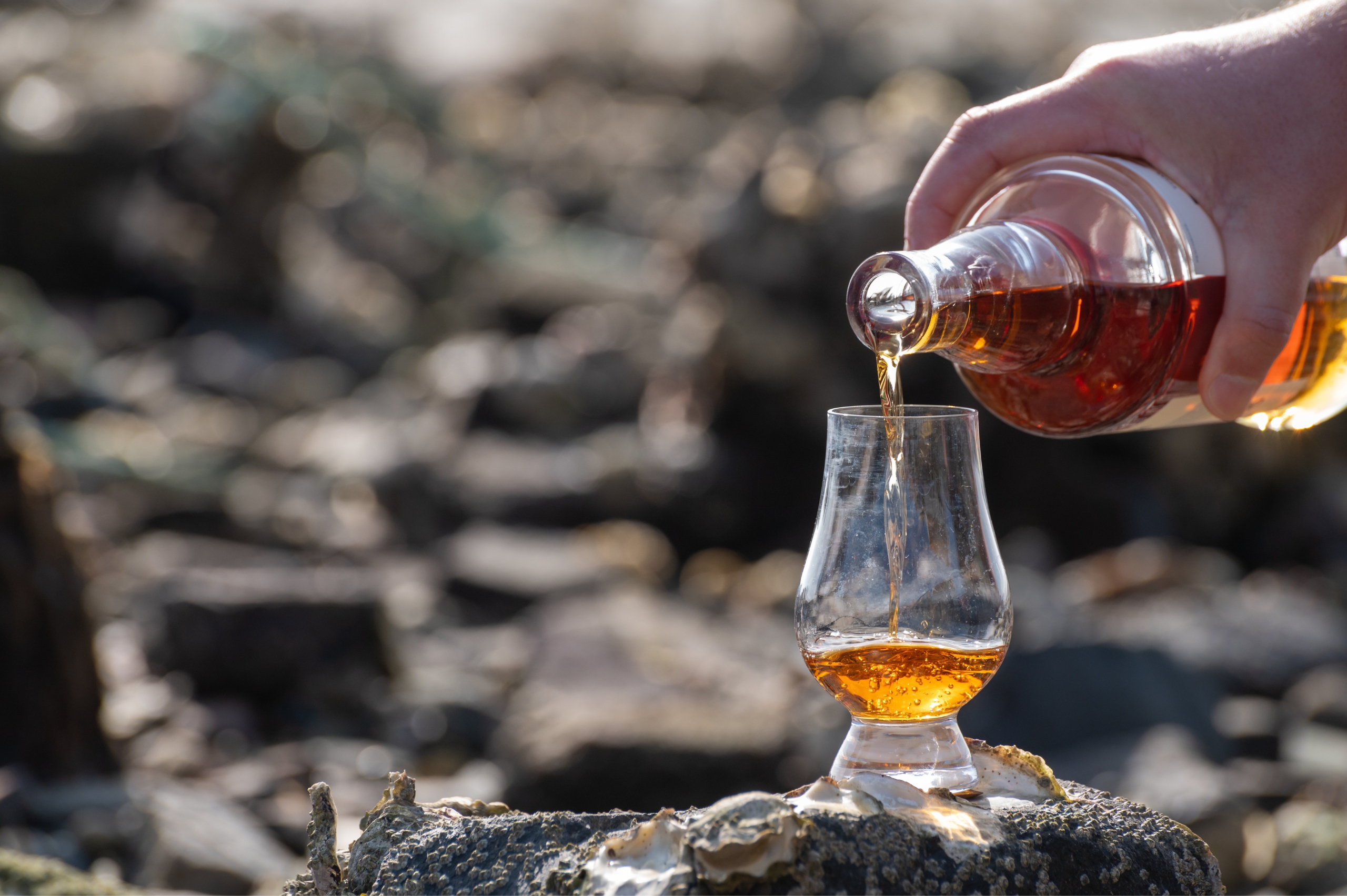There are so many whisky blogs, magazines, books, and YouTube clips that propose to tell the right (and wrong) way to sample whisky. But how do you learn to pick up characteristics? And how do you taste whisky correctly?
The simple answer is to taste different whiskies over time and take a ‘taste snapshot’ of the aromas and flavours. The more that you do this, the better and more precise your tasting will become. Build up your knowledge and experience with each sip and make mental notes about what you are tasting.
With whisky the true character comes through after some time, unlike other spirits. Therefore, it is important not to drink it too quickly. Taste is a personal thing, and it is important to sip and savour. But it’s also important not to take this too seriously and enjoy your whisky.
Glassware
The style of whisky glass that you choose will help you to taste whisky better, even before any whisky has been sniffed or tasted. The shape is the most important factor. By using one that has a wide base and a narrower opening, such as the Glencairn glass, this will channel and concentrate the aromas of the whisky towards your nose.
A similar tulip-shaped wine or sherry glass, known as a copita, works just as well. Glasses such as tumblers should be avoided if you are analysing whisky or hosting a tasting as the aromas dissipate too quickly. However, they are perfect for sipping and savouring a whisky at leisure.
The nose
The aromas from a whisky are often referred to as ‘the nose’. Important characteristics are identified at this stage. The nose should give an indication of what the whisky will taste like.
Pour a reasonable amount into the glass and take a note of the colour. Different whiskies from different cask types will present differently – ex-bourbon casks are generally light and golden yellow, while ex-sherry casks are darker with a deeper amber hue. A mix of casks can be anything in between.
Put your nose to the glass and breathe in with your mouth open – this increases the flow through your airways. Let the aromas circulate around your nostrils and repeat three or four times.
Think about the aromas and what they remind you of – are they light, fresh, heavy, rich, fruity, floral, spicy, smoky? Try to identify something new with each sniff as your nose tunes in to the new sensations.
The palate
The palate is the flavour of what you experience as you taste whisky. It is the most rewarding and enjoyable part of whisky for many people. Sip and savour are the way to go.
And no Tequila-style slamming please. Roll it around in your mouth as different areas of your tongue and mouth respond to different flavours and stimuli. Try to identify obvious flavours that are present and repeat, trying to identify something new each time. What do the flavours remind you of?
Remember there are no right or wrong answers and each person’s taste buds and experiences are different – do not worry too much if you get a flavour that no one else does or vice versa.
The finish
When swallowing whisky, you will feel a distinct alcoholic burn. Once this passes many whiskies reveal an extra layer of depth and character. This aftertaste is ‘the finish’. Some say that this level of complexity is what differentiates whisky from other spirits.
At this point several flavours will reveal themselves, of which some can be extremely subtle. Again, try to relate what you are experiencing to things that you have tasted in the past. Also, ask yourself whether the flavours remain for a short, medium, or long time. This is called ‘the length of finish’.
Should I add water or ice?
This is a key question that is often asked at whisky tastings. Adding water or ice can change whisky in both positive and negative ways. It is again down to personal taste.
Always taste whisky at its natural strength first and then you can adjust by adding as much or as little water as you want. This dilutes the strength and releases aromas and flavours that can be masked by a high ABV. This is especially true in a cask strength whisky.
How much water you add is personal and dependent on your taste. Put in small amounts at a time, start with three or four drops for example, then more if needed until your find the perfect level for you.
Avoid drowning the whisky at first as once the water is added you can never remove it. The water should be still spring water, rather than carbonated or from the tap, and at room temperature.
Some connoisseurs say to never add water to your whisky. However, everyone that either produces whisky or creates the products we drink – the distillers and Master Blenders – always add water when analysing the spirit off the still or whiskies to be used in a blend or single malt. This helps to give a full analysis of aroma and flavour.
Most whisky already has some water added and many people do not realise this. The process is called ‘cutting’. This is done before bottling and uses local spring water. This is to bring the alcohol down from the high ABV strength in the cask (often between 50-60% ABV) to a more acceptable drinking level, normally between 40-46% ABV.
Ice is a slightly different story. Rather than enhancing as water can, ice rapidly drops the temperature of the whisky and inhibits aroma and flavour characteristics. They get locked in.
Think of it like drinking an over-chilled white wine – it only begins to reveal its true character when coming back up to room temperature. Whisky is the same. Adding ice is great as a refreshing way to enjoy whisky, but not for analysis or at a tasting event.




